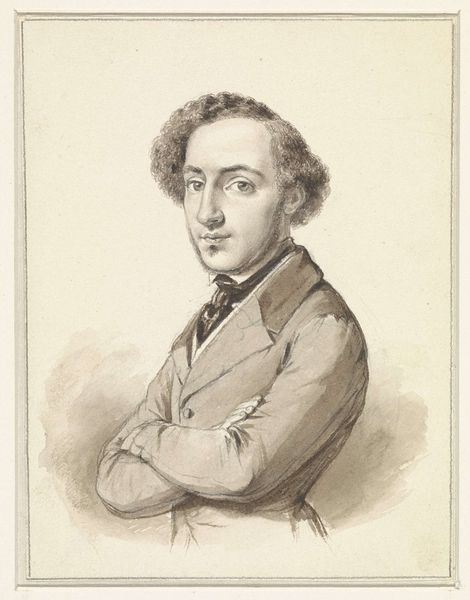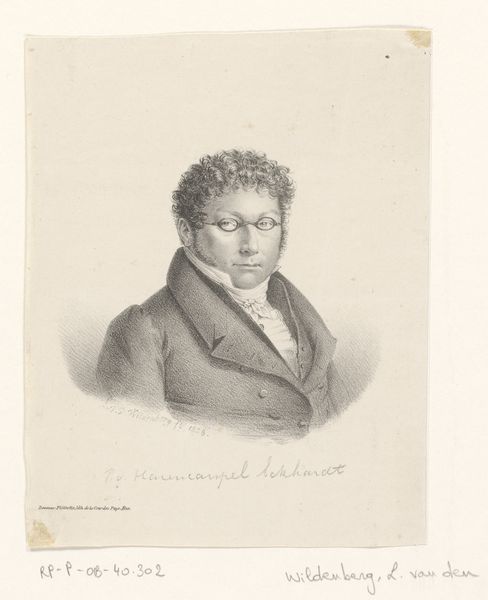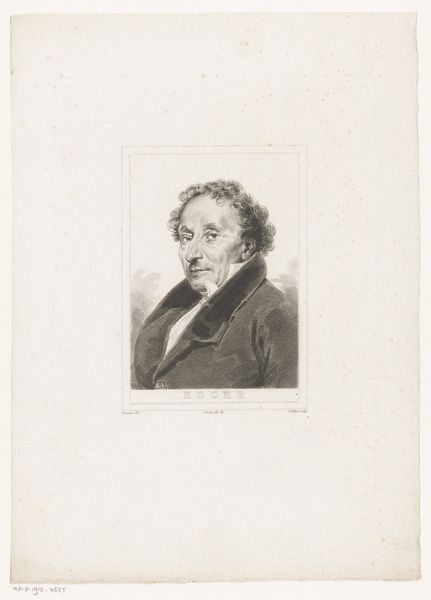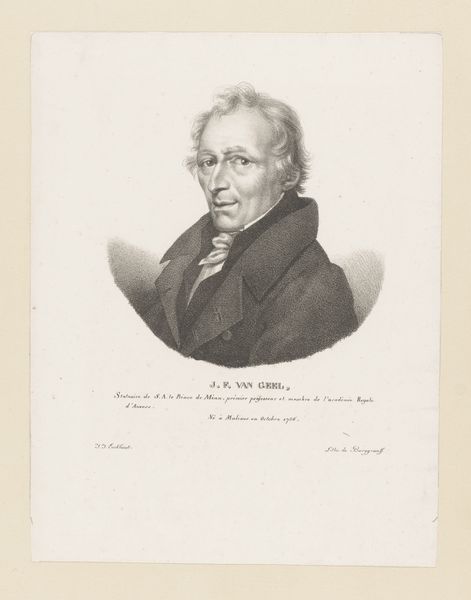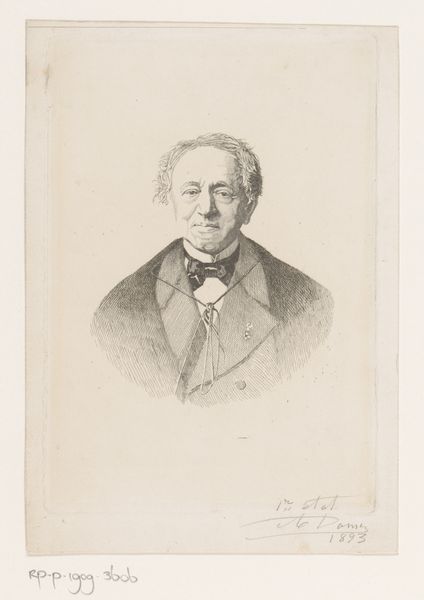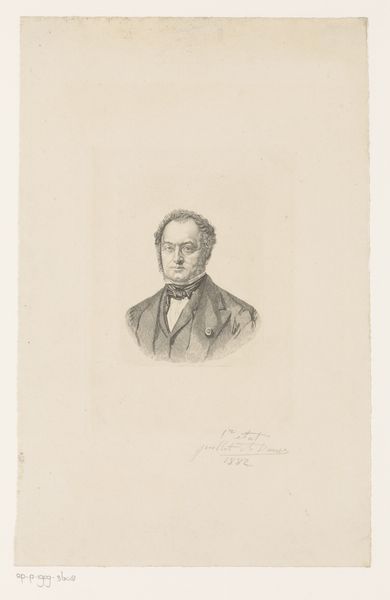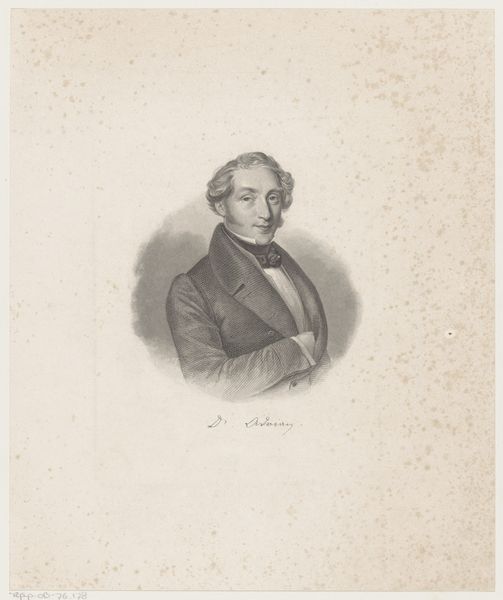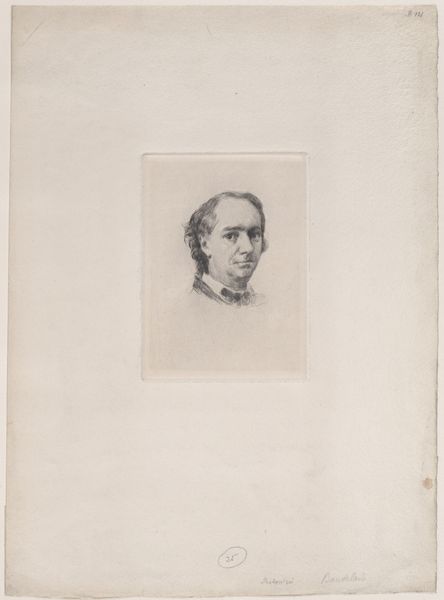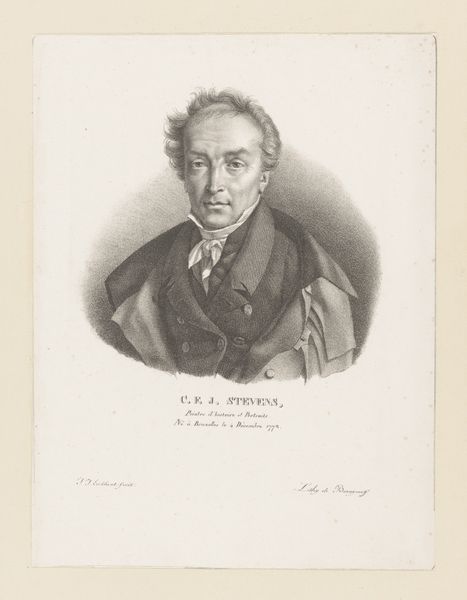
Portræt af notarius publicus, professor, etatsråd Nicolai Christian Levin Abrahams 1823 - 1826
0:00
0:00
drawing, pencil
#
portrait
#
drawing
#
romanticism
#
pencil
#
academic-art
#
realism
Dimensions: 242 mm (height) x 399 mm (width) (bladmaal)
Curator: This is a portrait by H.W. Bissen, titled "Portræt af notarius publicus, professor, etatsråd Nicolai Christian Levin Abrahams." It was made between 1823 and 1826 and is a pencil drawing. Editor: What strikes me immediately is its stark simplicity, and the somewhat cool demeanor conveyed through line and form. Curator: Indeed, the restraint in Bissen’s handling of the pencil contributes to the sitter’s composed and perhaps intellectual persona. Observe the cross-hatching, creating subtle tonal gradations on his face and clothing. It lends a sense of depth without being overly romanticized, typical of academic art of that era. Editor: Right, but it also raises questions. We know this depicts a public notary, professor, and state councilor. How does the act of creating this portrait serve societal needs? Consider the source of the pencils used. The materials are essential. Curator: Ah, but don't overlook how Bissen expertly captures Abrahams' gaze, sharp and intelligent behind his spectacles. It's a fascinating interplay of light and shadow that draws you in and is beautifully structured through Bissen's specific technique. It has the qualities of realism with a romantic undercurrent. Editor: I see what you mean. Still, I’m wondering about the context: What class of society commissioned portraits? Whose labor made the materials affordable for art production, shaping what stories get visually recorded and circulated? It cannot be dismissed. Curator: A vital point, absolutely. It adds another dimension to appreciating the work—one which takes it beyond mere representation. The chair itself and its role as the primary support may indicate social standing or authority and its function can even guide one's perception. Editor: Yes, and the paper, even. Where was it manufactured? Was it readily available or a luxury? Every material tells a story about labor and distribution of resources. Curator: It is an opportunity to see how societal forces, labor, and available materials are integral to art creation and appreciation. Editor: Precisely. That's how an artwork offers entry into broader socio-economic currents of its time.
Comments
No comments
Be the first to comment and join the conversation on the ultimate creative platform.

